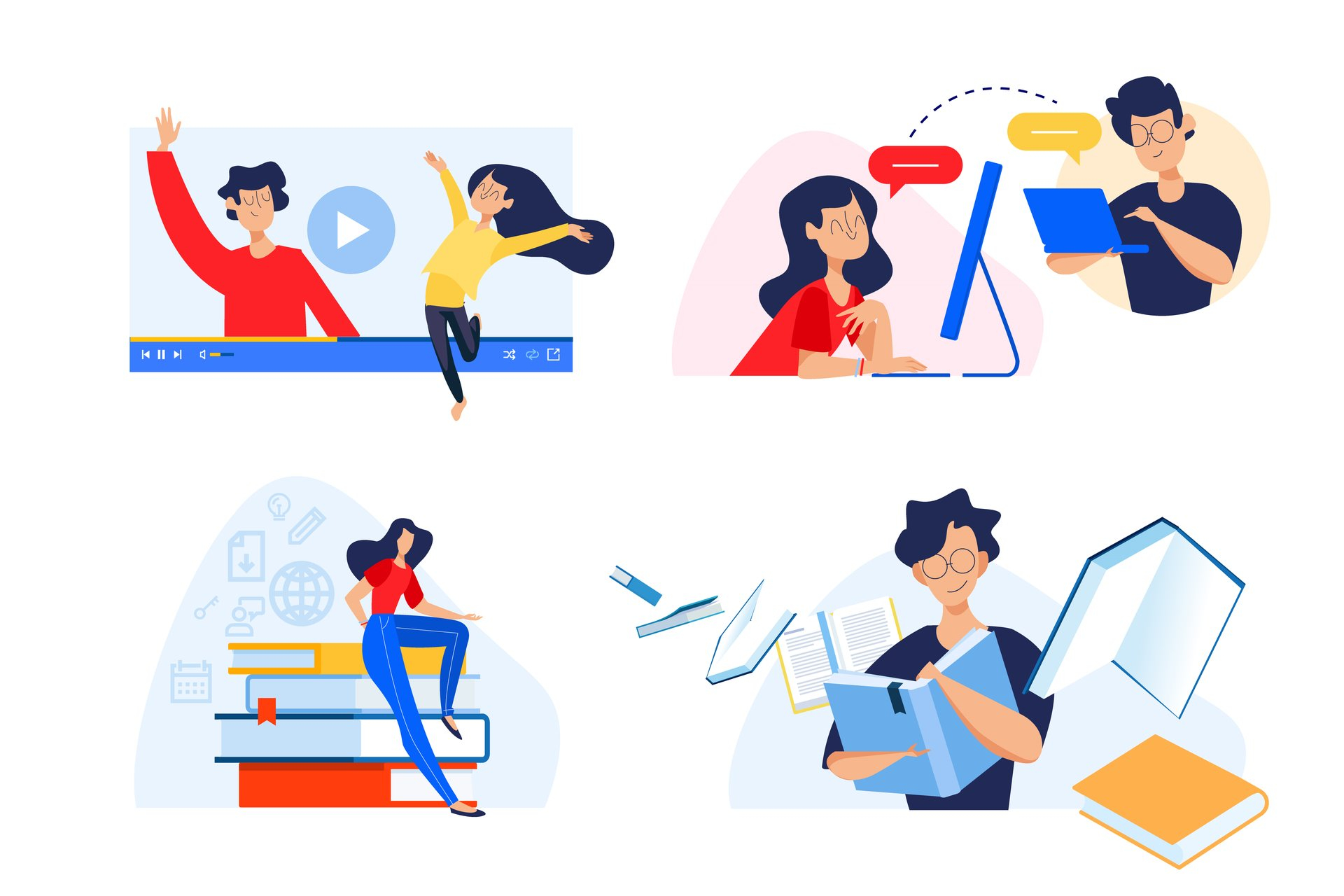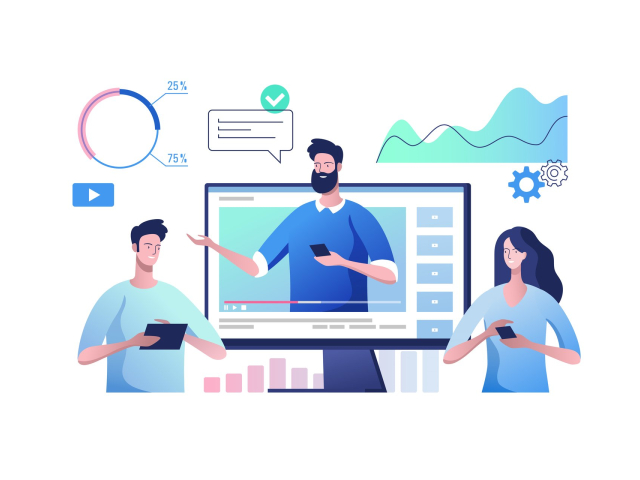
In the digitized world, it is inevitable that education can be maintained in every area of our lives without the need for physical spaces. There are many different methods of online education and these interactive methods can be much more effective than formal education. It can also be demonstrated with a little calculation that developing E-Learning platforms will be much less costly than bringing teachers and students together for months/years in the same environment.
The concept of e-learning is a learning method that makes education interactive with the courses given simultaneously in the digital environment or with tools such as pre-loaded video, question-answer, game, simulation. E-learning platforms, which have become a popular and growing industry day by day, are widely used in daily life, not only in extraordinary situations such as Coronavirus.
Why Online Education?
In today's world, where the digital transformation of institutions is gaining momentum, there are many different reasons for online education. Although we describe the details in our article titled "Advantages and Disadvantages of E-Learning Platforms", it is worth mentioning briefly why distance learning platforms are preferred.
- It eliminates geographical constraints. It is possible to benefit from the same quality of education from all over the world.
- It removes temporal constraints. It is provided to receive education at different times.
- It eliminates spatial constraints. In the scenarios where the number of participants, listeners, and students is increasing, online education is preferred because formal education can become unmanageable. With e-learning infrastructures, information can be offered to an unlimited number of people upon request.
- In cases where the data to be presented is too much to be managed, a suitable database is created and e-learning platforms are used when it is necessary to keep, organize and share the data.
- It is flexible as it allows for many different educational methods.
- E-learning platforms' costs are too low to compare with formal education costs.
- It provides convenience for people who have problems in real-time communication.
- As we have recently seen in the case of Coronavirus, in cases where formal education is interrupted such as natural disaster, war, epidemic disease; with e-learning, continuity of education can be ensured.

Online Education / E-Learning Methods
E-learning infrastructures are divided into different categories according to whether education is given live or not, whether it is interactive or not, and how education is given and received.
-
Synchronous E-Learning
This real-time educational method is provided by tools such as video conferencing, live webinars, instant-messaging tools. In this online education method, students can ask their questions, and teachers can upload documents instantly. However, in this method, students may not be able to access the information whenever they want, and there may be requirements such as the official login. In the synchronous e-learning method, advanced, secure, and uninterrupted internet infrastructures are essential for both security of information and continuous education. This kind of online education methods can be used in every field, but it is more widely used in fields such as visual arts, physics, chemistry, and engineering.
-
Asynchronous E-Learning
The asynchronous e-learning method, which can also be defined as self-paced, is independent of real-time. Online students can access documents, assignments, etc. at any time, or according to the time levels determined by the trainer. There are messaging and comment boards that encourage student interaction and include teachers. In addition, file sharing platforms such as Google Drive can be used according to this method. Many universities use this method to support formal education.
-
Hybrid E-Learning
It is the method in which synchronous and asynchronous online education methods are carried out together. It has the characteristics of a common platform where online education with a specific plan is held and materials related to lessons can also be loaded. This method can be tried by people who want to experience online learning and are biased towards a new learning method. We can regard it as the most ideal e-learning method.

E-Learning Platforms in Education
Almost all universities have a system where announcements are made, course documents, and grades are loaded. In addition, many universities need systems where all education can be carried out online. Many major universities in the world such as North Caroline State University, George Washington University, Florida University, Boston University have programs based on online education and it is possible to participate in these programs from different parts of the world. These courses and even exams are held online, and relevant certificates are provided if any.
The interest in e-learning tools is increasing in order to continue education in emergency situations such as Coronavirus. Currently, educational institutions are trying to provide courses that students can attend from their own homes and hybrid e-learning platforms are generally preferred as infrastructure. In the systems where all kinds of content related to the course are presented, it is aimed to ensure that education is not disrupted by real-time online education and more advanced methods than formal education.
Learning Management Systems (LMS)
Learning management systems are software that is generally used on the web, which organizes the online education process, manages the teacher-student relationship, ensures the protection and sharing of data, offers documentation, and reporting. Open source or paid samples are available. Some examples of open-source LMS are Opigno, Moodle, Sakai, Canvas, Chamilo…
LMSs contain many interactive tools. With these tools, education can become more interesting and the topics are easier to understand. The open-source h5p library used by Binbiriz on distance learning platforms offers unique and effective solutions in this field. (1)
In h5p library;
- Interactive videos and lecture presentations on which questions can be asked in different formats, tests can be made,
- Branching scenarios where different videos or presentations are shown for each option when different choices are made,
- Arithmetic tests that can be used in child education,
- Various graphics, colleges that visually give contents,
- Various audio tools that make it easier to understand what you are listening to,
- Various gamification tools that make education interesting,
- Different multiple choice, space filled quiz, exam options
is located.
If you have a custom online education / e-learning project in mind, you can contact us and get an offer for our special LMS (Learning Management Systems) solutions.
References:
- https://h5p.org/interactive-video
- https://www.td.org/talent-development-glossary-terms/what-is-e-learning
- http://www.fao.org/3/i2516e/i2516e.pdf
- https://www.affordablecollegesonline.org/college-resource-center/e-learning-guide/
- https://study.com/articles/Best_Universities_with_E-Learning_Programs_List_of_Schools.html



